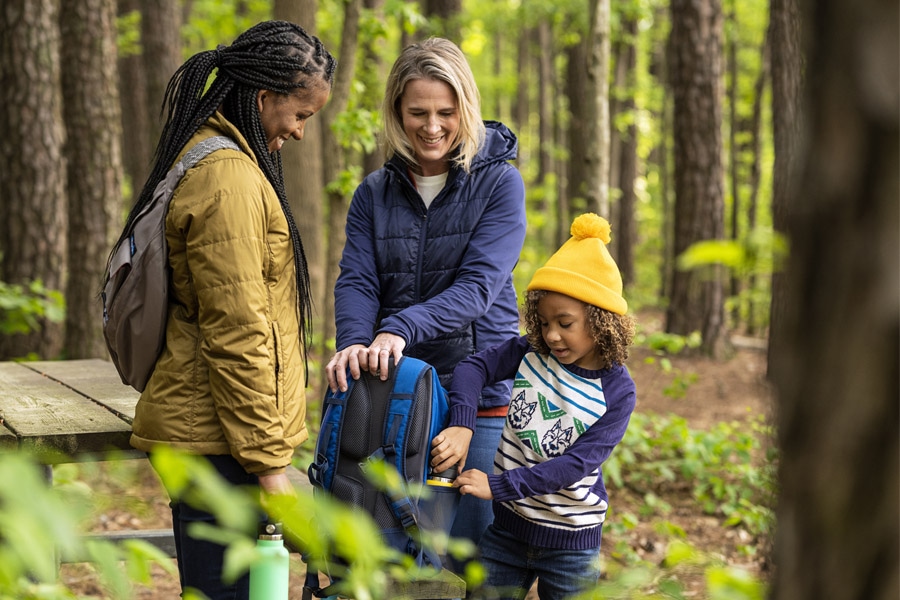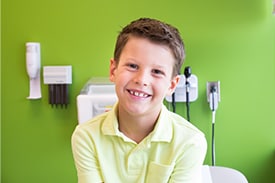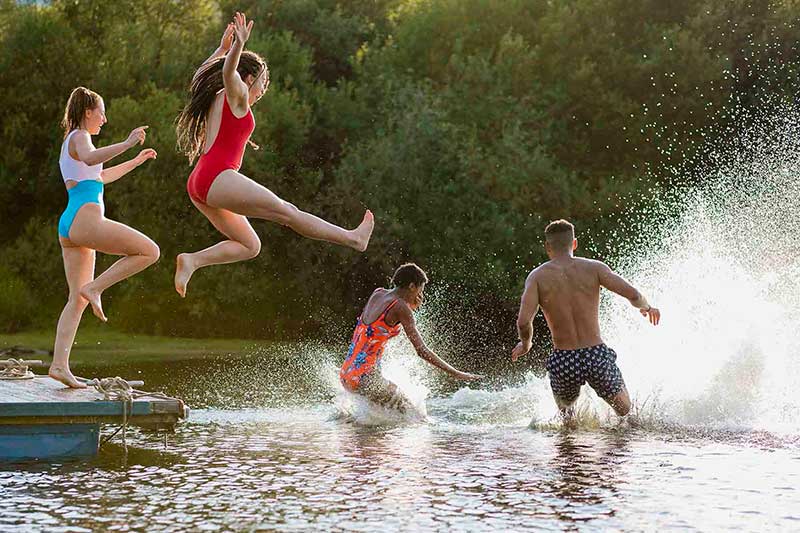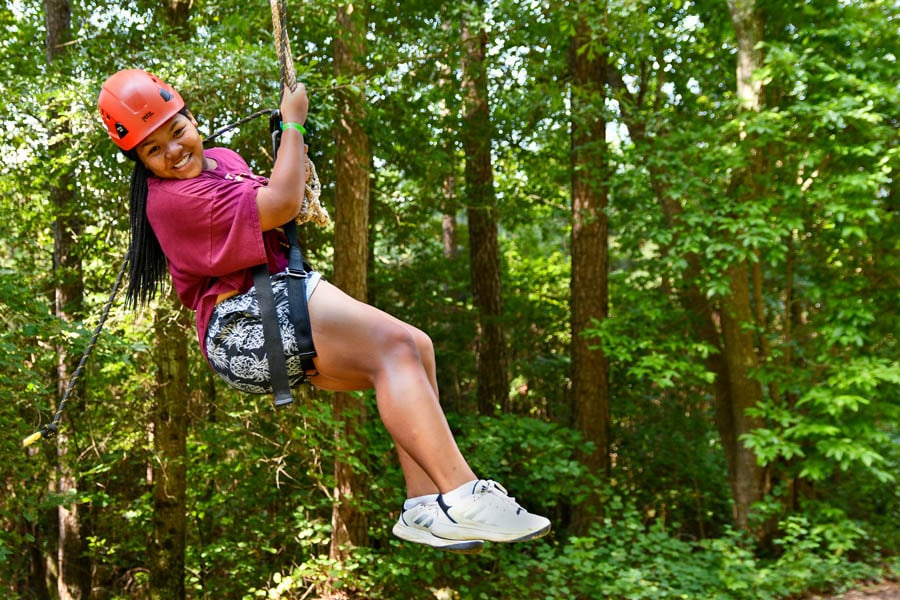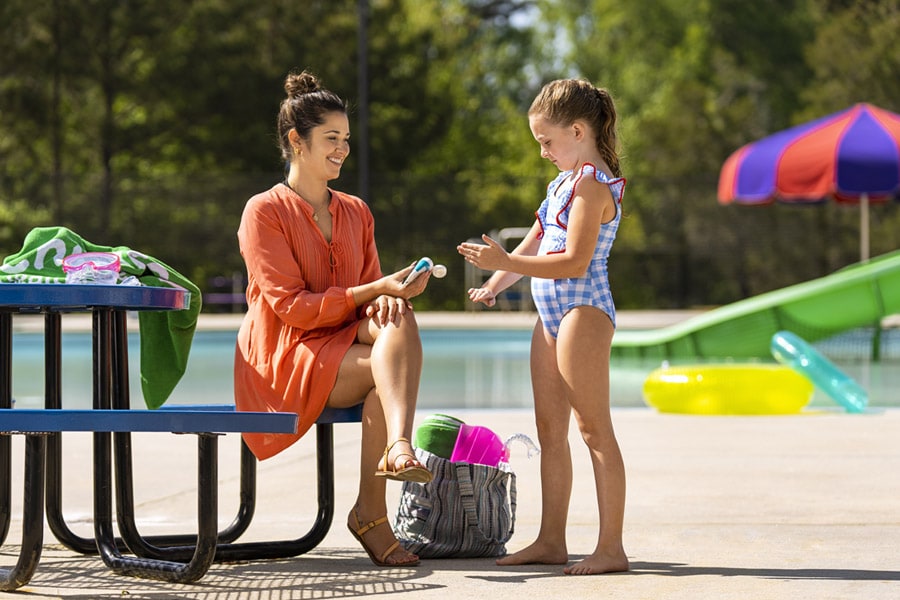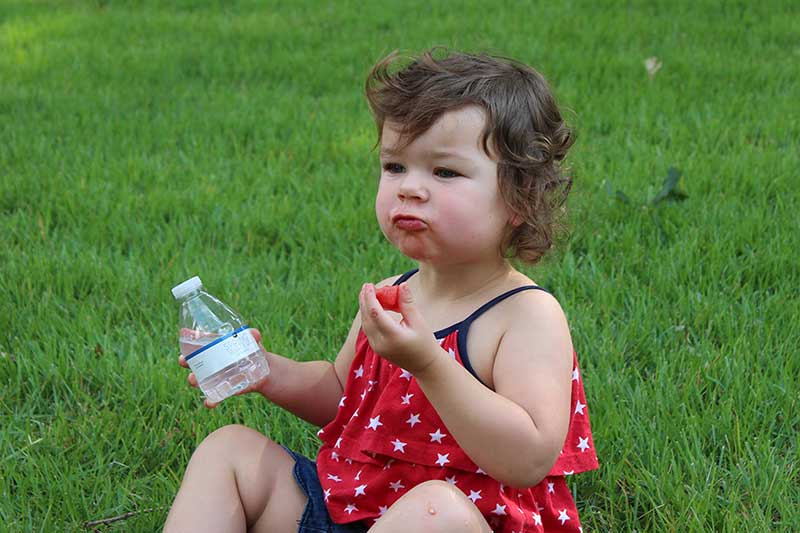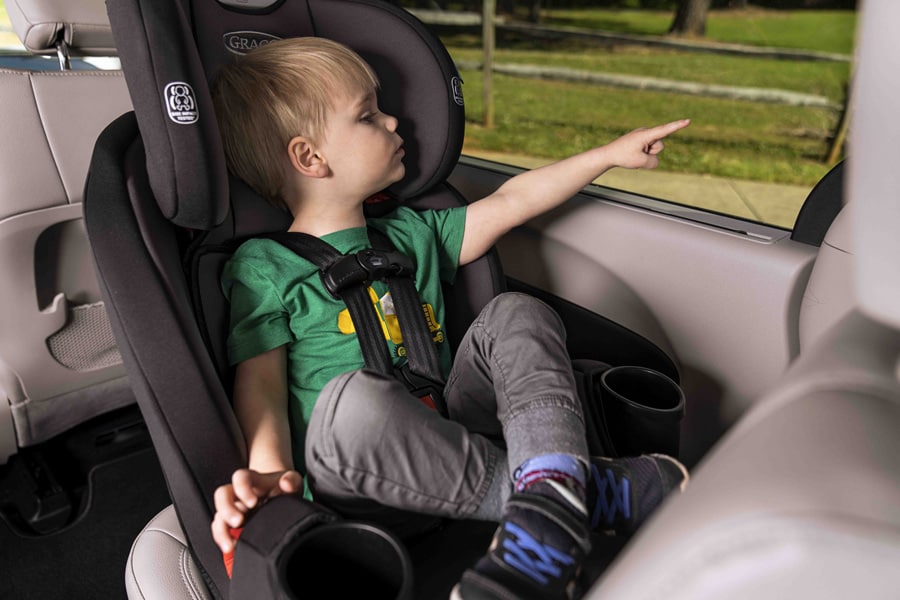How to Keep Your Child Safe in the Summer Heat
When summer hits, your kids probably look forward to long days at the pool, outdoor camps and neighborhood playdates*. But high temperatures (usually between May and September) come with serious health risks for children.
But you can still have fun in the sun! Read on for tips to protect your child during the hot summer months.
In this article:
*As the U.S. continues to try to control the spread of COVID-19, the CDC and other clinical experts do not recommend that you or your child visit playgrounds or other high-traffic areas. Please continue to follow safety guidelines to prevent the spread of germs and, ultimately, to keep you and your family safe.
If your child has an injury or is showing signs of illness, call your doctor or visit an urgent care center. If your child has a life-threatening injury or illness, is having trouble breathing or is unconscious, call 911 and/or visit an emergency department immediately.
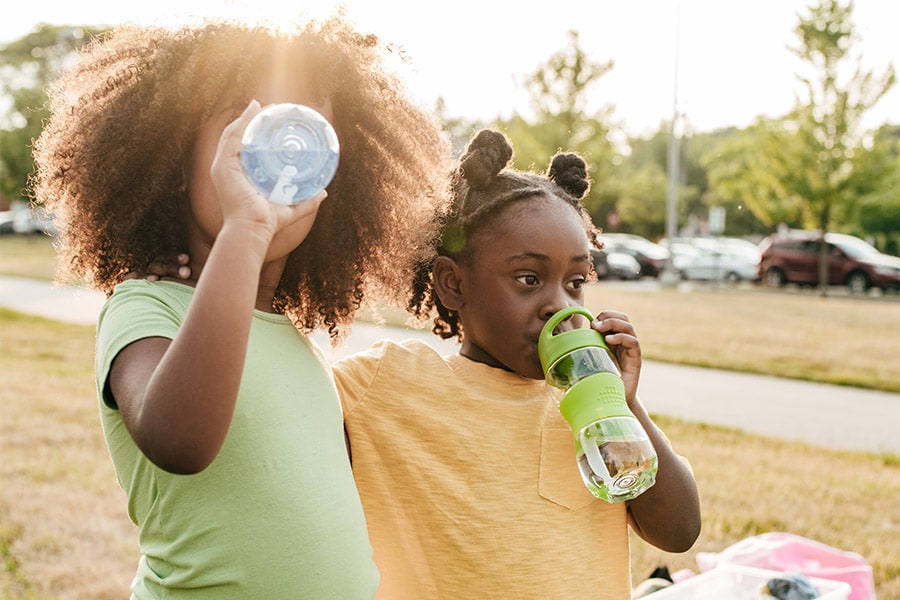
Know which heat-related health conditions to look out for
Young children are more likely than adults to suffer from heat-related health issues like heat cramps and heat exhaustion as well as conditions like heat stroke, which can lead to death. That’s why it’s important to know the signs and symptoms of heat-related illness and have a plan for dealing with hot temperatures.
Watch out for signs, and know when to seek medical attention
“Babies and young children are more vulnerable to heat-related illnesses because their body does not have a mature way to control their body temperature,” says Maneesha Agarwal, MD, a pediatric emergency department physician at Children’s Healthcare of Atlanta. “Also, babies do not sweat, which is an important way we cool down in the heat.”
Some conditions—like diabetes, cystic fibrosis, obesity or hypothyroidism—and medications put children at an even higher risk for illness in high temperatures. If your child is taking medication for a medical condition, talk to your pediatrician about any potential side effects from heat.
Whether your child is high risk or not, make sure you’re familiar with the symptoms of heat-related health problems and know what to do if there is an issue. Some of the most common signs your child is experiencing a heat-related health problem include:
- Cramps
- High body temperature
- Red, hot, dry skin (not sweating)
- Heavy sweating
- Rapid pulse
- Throbbing headache
- Dizziness
- Nausea/vomiting
- Confusion
- Loss of consciousness
- Paleness
“Heat cramps can usually be treated by hydrating, resting and stretching,” says Dr. Agarwal. “But heat exhaustion, which usually causes extreme thirst, weakness, dizziness, nausea or vomiting, needs quick medical attention.” And so does heat stroke, which can cause flushed (red) skin, a fever of 104°F or higher, changes in behavior, seizures, loss of consciousness and even death.
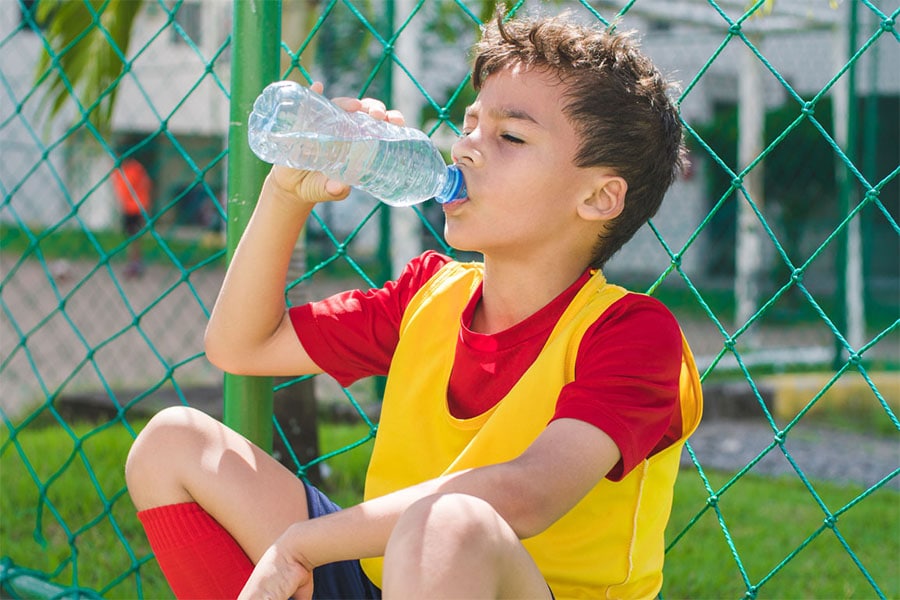
Fuel up properly to prevent dehydration in kids
Another danger of extreme heat is the risk for dehydration, which is when the body loses more fluid than it’s taking in. In the summer months, this usually occurs when kids are outside sweating and not drinking enough water.
Signs to watch out for
There are different levels of dehydration in kids, but the American Academy of Pediatrics recommends that you notify your child’s pediatrician if they show any of the following signs:
- Low energy levels
- Less frequent urination
- Dry mouth
- Lack of tears when crying
- Loose stool or decreased bowel movements
- Extreme fussiness
- Excessive sleepiness
- Sunken eyes
- Cool, discolored hands and feet
- Wrinkled skin
Ways to prevent dehydration in kids
Since you may not always be able to accompany your child during their outdoor activities, you can prepare ahead of time for their long days in the sun, and teach them healthy ways to stay hydrated, even when you’re not there to remind them. To lower your child’s risk of dehydration:
- Ensure your child is fueling up properly: If an activity lasts less than 1 hour, water is best.
- Offer a sports drink that contains a combination of carbohydrates (sugar) and electrolytes for vigorous activities lasting longer than 1 hour. No sports drink? No problem! You can also offer foods that contain carbohydrates and electrolytes, such as milk or a milk alternative; a seed or nut butter sandwich; or a banana, a handful of nuts and some crackers. Avoid offering fruit juice, soda and caffeinated beverages.
- Don’t wait until your child is thirsty to offer water or encourage them to hydrate; if they’re thirsty, they may already be dehydrated. Encourage them to drink fluids 30 minutes before an activity begins.
- Take frequent breaks to drink water and cool down during activities. Kids who weigh less than 90 pounds should aim for 5 ounces of water every 20 minutes, and those who weigh over 90 pounds should aim for 8 ounces every 20 minutes.
- If you’re breastfeeding your baby, make sure to keep yourself hydrated by drinking plenty of water. Babies 6 months and younger get all the hydration they need from breastmilk and/or infant formula and should not be offered water. Babies older than 6 months can be offered small sips of water from an open cup in addition to breastmilk and/or infant formula.
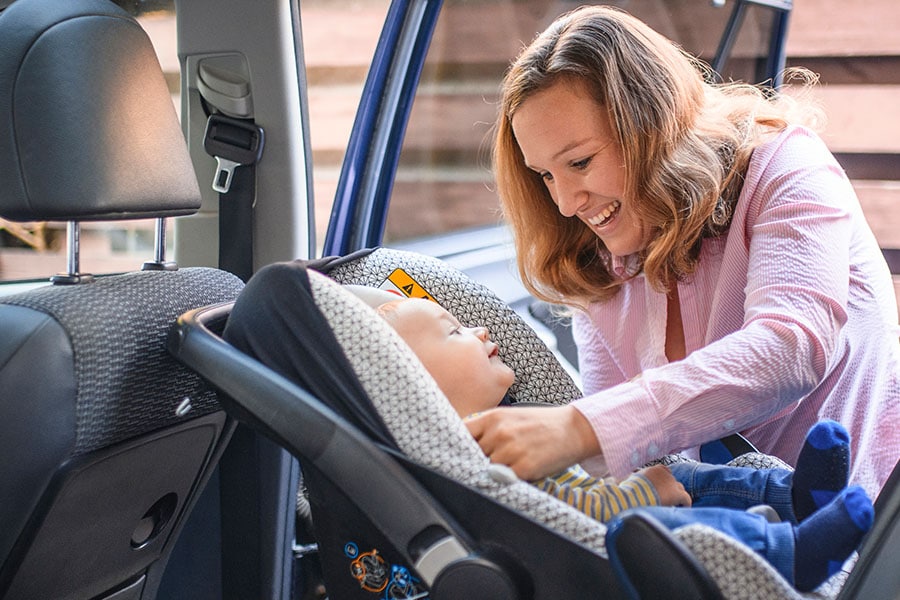
Never leave your child in a hot car
When we hear tragic stories of illness or injury, many of us think it could never happen to our families. However, in 2019, 52 families had to cope with the death of a child after they had suffered a heat-related illness in a vehicle.
Georgia has the 5th highest rate of pediatric deaths from hot cars in the U.S. Since 1990, 40 Georgia children have died. The stats are scary, but with knowledge and practice, stories like these are 100% preventable.
Causes of hot car-related tragedies
“Leaving a child in the car to run into a store for a quick errand may seem harmless,” says Agarwal. “But the truth is it’s not safe to leave kids in the car for any amount of time.” Here’s why:
- A car’s internal temperature can get higher than 100°F when the temperature outside is only in the 60s.
- Temperatures inside cars can rise 20° in just 10 minutes. So a quick errand is never harmless.
- A car’s internal temperature can reach 133°F in 1 hour on a 90°F day.
- Kids’ body temperatures can rise 3 to 5 times faster than most adults.
How to prevent tragic car-related incidents
According to the National Safety Council (NSC), 80% of deaths resulting from children in hot cars were unintentional. Even if we know it’s unsafe to leave a child in the car, life is busy and full of distractions—especially as a parent! So when you’re out and about, here are some things to remember:
- Check your front and back seats, ensure you have your keys in hand, and lock all car doors each time you get out of the car. Many tragedies occur when children sneak into an unattended car.
- Leave a bag, cell phone or other essential item near your child’s car seat as a reminder to check the back seat. (And try putting one of your child’s toys or lovies in the front seat as an extra reminder.)
- Discuss a plan with your child’s daycare center, school or caregiver to always call you if your child doesn’t arrive on time.
We’re all only human, but turning these tips and tricks into a regular routine will help you make safety a top priority.

